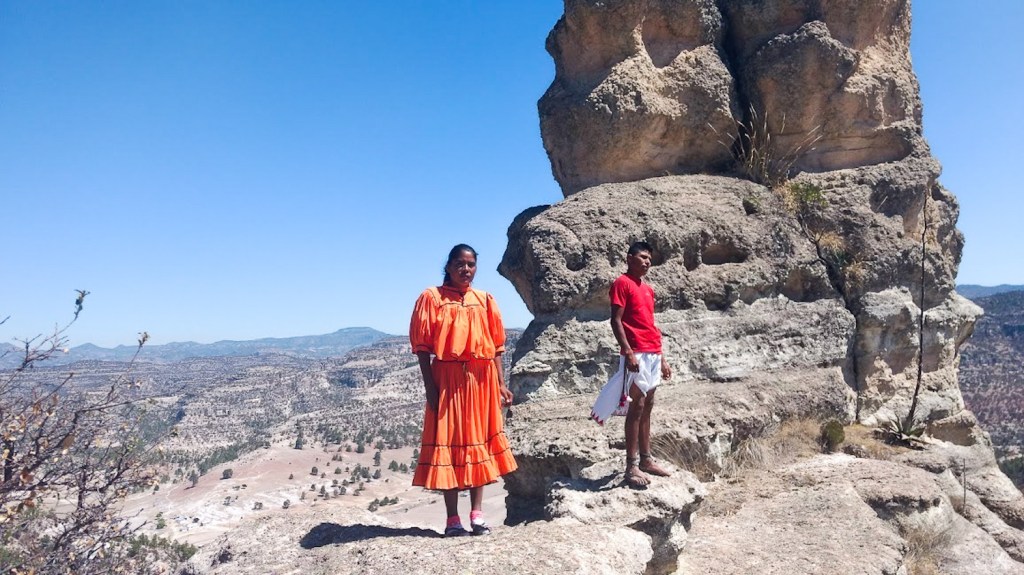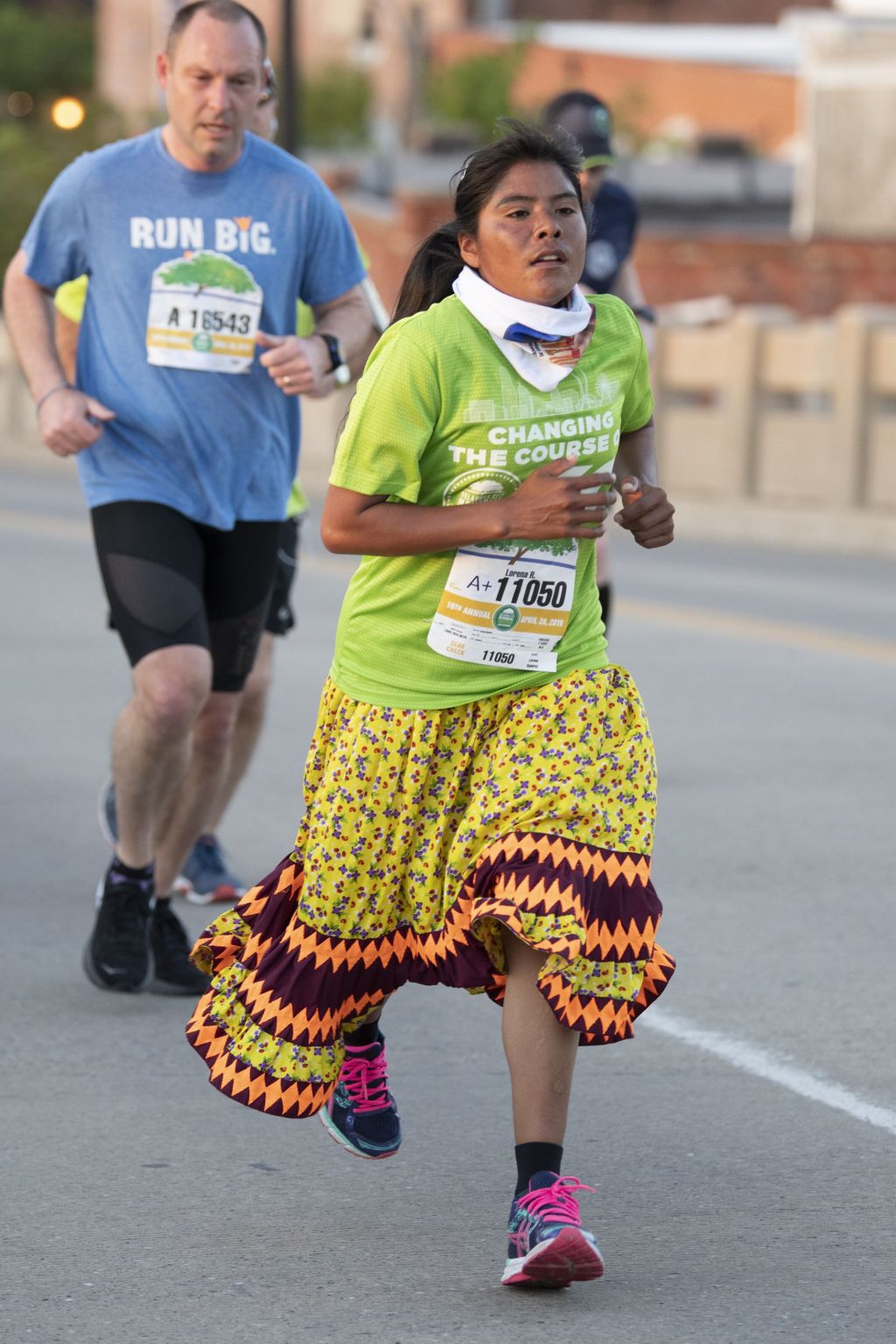A version of this story appeared in the fall 2019 issue of Uncommon Path.
When Lorena Ramírez lined up among the elite runners for the 2018 Tenerife Bluetrail, a 63-mile trail race that winds across Tenerife in the Canary Islands from sea level up to 11,600 feet, she was unmistakable in a long, puffy-sleeved green-and-white dress with red trim, a bright pink bandana around her neck, a Salomon hydration vest and a pair of huarache sandals. She was competing against other ultrarunners—there were more than 2,400 racers from 38 countries in the race—but she had not formally trained for this grueling event.
Her major advantage? Ramírez, 24, is Tarahumara, a group of Indigenous people from the deep canyons and rough mountains of Chihuahua, Mexico, known for their long-distance running talents. Traditionally, they have used running as transportation and communication between distant settlements. Decades ago, physiological tests found that when the Tarahumara run long distances, their blood pressure actually falls and their heart rate remains at a steady 130 beats per minute—all while motoring for mile after 8-minute mile. They call themselves Rarámuri, which some ethnographers translate as “those who run fast” and others as “the lightning- footed people.” In the past, they practiced persistence hunting, which means they ran game to death.
Over the years, Tarahumara runners have splashed across the ultra scene. In 1993, they emerged from Copper Canyon to dominate Colorado’s high-altitude Leadville Trail 100, becoming stronger as the race progressed. (“They seemed to move with the ground,” one observer told The New York Times. “Kind of like a cloud or a fog moving across the mountains.”) In 2006, Arnulfo Quimare defeated Scott Jurek in the Copper Canyon ultra in Tarahumara country. But Tarahumara runners haven’t typically taken on traditional sponsors or coaching. And none have yet become elite marathoners, perhaps because 26.2 miles is too short.

Lorena and Mario Ramírez at home in Copper Canyon System, in the Mexican state of Chihuahua.
Ramírez grew up in a poor family of nine children and built her endurance crisscrossing through her home landscape, a network of gorges deeper and larger than the Grand Canyon. She is extremely shy. Her brother, Mario—who has also competed in organized ultras and often translates for her—describes her as “strong, admirable, kind, serious and direct.” For her, running is utilitarian, joyful and interwoven into subsistence and celebration, working and playing.
But that doesn’t mean she isn’t competitive. In April 2017, Ramírez won the Ultra Trail Cerro Rojo 50K in Puebla, Mexico. Not long after, she became the first Tarahumara woman to compete in a European ultra—with her inaugural attempt at the Bluetrail, the second-highest race in Europe. She’d never traveled outside Mexico, nor seen the ocean. Just over halfway through, and short of the summit of Mount Teide, the tallest peak in Spain, her knees hurt too much to continue. She had to drop out.
Tarahumara runners have yet to become elite marathoners, perhaps because 26.2 miles is just too short.
Come 2018 she was back, her skirt swishing as she calmly swallowed up vertical, the rubber-tire soles of her sandals floating over the rocks. She placed third in the senior category (18 to 39 years old) and fifth for all women, running 63 miles in 20:11:37.
A month later, she was the second woman to cross the line in the 100K Ultra Maratón de los Cañones in her home state. And in April 2019, she hit another milestone: her first race in the United States, at the Oklahoma City Memorial Half Marathon, where she finished 19th in her division (1:50). Maybe the distance was too short to show off her endurance.

Photo Credit: OKC Memorial Marathon
For Ramírez, something notable happened in Oklahoma City. She wore running shoes—black with pink laces—to help protect her legs and knees from the hard pavement. But she’s not a convert. “I feel a lot more comfortable wearing my sandals because they are lighter,” she says. “When I run in sneakers, I feel I can slip anytime.”
Additional reporting by Evelyn Spence
